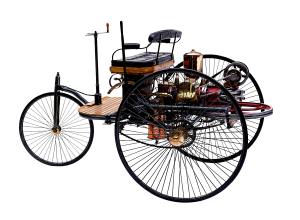
Below is a brief outline of the basic steps you will need to take before filing a patent application in the United States.
The United States Patent Trademark Office (USPTO) has specific rules which can be complex and hard to follow.
Applying for a patent is a business decision. Even without a patent attorney, or the use of professionally prepared patent drawings, you may still pay hundreds or even thousands of dollars in fees to file and obtain a patent from the USPTO. Recurring costs beyond the application may include utility patent maintenance fees.
Before making this investment, research the market you hope to enter and decide whether it’s worth the outlay of funds.
You cannot get a patent just based on an idea. You must show how your invention works. In addition, your invention must be new and inventive. This means it must be different in some important way from all previous inventions in that field. According to US patent law, “whoever invents or discovers any new and useful process, machine, manufacture, or composition of matter, or any new and useful improvement thereof, may obtain a patent therefor, subject to the conditions and requirements of this title.”
Don’t bother wasting time and money applying for a patent for mathematic formulas, natural phenomena, perpetual motion machines, etc. It’s likely the USPTO’s patent examiners will immediately reject your application. If in doubt, it is better to ask a patent professional. I am happy to provide a free 1/2 hour call. Please choose a time on my calendar.
To make sure your invention is new, you must investigate all earlier developments in your field. This involves searching U.S. (and sometimes foreign) patents, as well as other publications, like scientific and technical journals, to find related inventions.
Although patent searching is time consuming, it may be mastered with practice.
You can start your research on the Internet, but might also want to visit a Patent and Trademark Depository Library at www.uspto.gov. There, you can search earlier patents and get help from a local public librarian.
When you search, you will certainly find other inventions that are similar to yours. In your application, you should show how your invention improves upon or is different from these earlier developments.
When you file with the USPTO, you have a choice. You can either file a full-blown regular non-provisional patent application or a provisional patent application (PPA).
A PPA is not an actual application for the patent itself. Filing a PPA simply allows you to claim “patent pending” status for the invention and involves only a small fraction of the work and cost of a regular patent application.To file a PPA you must include a detailed description of the invention, telling the public how to make and use the invention, and an informal drawing. In some cases, to get a filing date, inventors sometimes file lab books and power point to the USPTO, which may or may not be a good idea.
You must file a non-provisional patent application within a year of filing the PPA. If you do not, you can no longer claim the PPA filing date. Often, inventors file a PPA in order to gain quick credibility and, perhaps, attract investors.
Non-provisional patent application: Filing a non-provisional patent application, or regular patent application, starts the examination process at the USPTO, which is necessary for getting the actual patent. To get a filing date, you may have to provide specification, claims, and drawings.
If you have questions about international patents and trademarks I am happy to provide a free 1/2 hour call. Please choose a time on my calendar